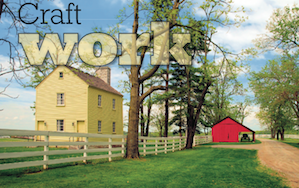The distillers of Kentucky, aware of the growing market for premium and super-premium whiskies in markets such as China, Russia and India being exploited by Scotch whisky producers, had systematically and successfully moved their whiskey from the bottom shelf to the top shelf through smart repackaging, new expressions and an upsurge in special releases, higher-strength bourbons and single cask offerings.
And, although the craft distilling movement has taken credit for the innovation that we are seeing in America now, the distillers of Kentucky had dabbled in this area, too. Woodford Reserve has released an annual special distiller’s edition for several years now, experimenting with whiskey matured in Sonoma Cutrer wine casks, bourbon made with four grains, and one from a sweet mash recipe.
Over at Buffalo Trace a small still is used specifically to make experimental whiskeys. The distillery has also experimented with wine casks, but also with dark, full-flavoured whiskeys and even smoky ones. If you want proof that these sort of experiments go way back then look at the age of some of the whiskeys – 15 years and older, certainly pre-dating the craft distillers movement.
According to master distiller Harlen Wheatley, there is nothing new about such experimentation at all. “All distillers do it,” he says. “It’s just that most of the time we do not release the whiskey because it does not meet our quality standards. We take things to new extremes for fun but a large number don’t work.”
Buffalo Trace has a specific experimental range and has released more than 25 small-batch bottlings. The failures run into hundreds and possibly thousands.
They’re a polite bunch in Kentucky, but you don’t need to scratch very far below the surface to find that not all the distillers of the state are enamoured with the new producers, for various reasons. One of the main ones, though, is the quality argument. Simply put, the old distillers have the size and commitment to reject anything that doesn’t meet their exacting standards, they say. The new producers can’t afford to reject large amounts of their whiskey, so they put out anything, damaging the reputation of all whiskey in the process.
When the new craft distillers started to produce whiskey, Kentucky was at first dismissive and then contemptuous. But that has changed as at least some of the new players have stepped up a gear and are set to enter the international market on a serious level for the first time.
Over the past few years craft distilling has become a huge movement in America. And you can plot its progress by looking back to the growth of the craft brewing revolution which preceded it, because it mirrors it almost perfectly.
Supported by the American Distilling Institute, which has published books on how to go about distilling, with training sessions and courses, and with events and exhibitions, the craft movement has flourished and is far from done yet.
There are now about 400 craft distillers and the number is growing. The movement has built its own momentum, the early distillers paving the way for successive ones by acting responsibly and persuading legislators that, in economic and tourist terms, they are a force for good.




